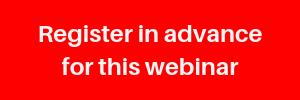60/40: There’s More Left in the Tank
“We are all capable of infinitely more than we believe.” - David Blaine, Magician
I recently finished an interesting book called Can’t Hurt Me by David Goggins, which navigates his life story and the many challenges he faced on his way to achieving many different milestones. He outlines a list of key principals that, if applied, help to position your mind to achieve more than you might currently deliver.
One principal that really resonated with me was the 40% rule. I have seen this rule applied extensively over the last four weeks, as individuals achieve what they thought was unattainable as they deal with the impact of Covid-19 on our business landscape.
Here’s how it works:
Most people believe they operate at their peak potential. “I put in 15 hours, today, and delivered X, Y and Z so I must be at my peak.”
We tell ourselves we were productive, but were we really? When we are at a point of capacity, what would happen if we told ourselves that we are only at the 40% mark with 60% more left in the tank?
Over the last few weeks, I’ve seen companies that were “aggressively” moving along to position themselves for the future, find a completely different gear and pivot entire multi-million-dollar organizations, in days. Out of necessity, they found another 20%, 40% or even 60% capacity they had previously under-utilized.
It’s not to say that companies need crazy world events to tap into the remaining 60% but it is a reminder that when things just start getting tough, we still have another 60% of untapped potential available to us. That 60% doesn’t relinquish itself easily but it is there.
So, I decided to test this theory on myself. Yes, I like to run - not super-fast - but it provides me with a great opportunity to think. The other day, I hit the wall: my legs hurt, my lungs gasped air and I had run far enough to be content with the distance covered. At that point, I reminded myself that I had only reached 40% of my potential and asked, “What would it look like if I went to 60%?”
Let’s just say, I was pissed at myself for only delivering 40% so I ran another five kilometers. Needless to say, walking the next day was an entirely different story but I did it!
In our current environment, we need to remind ourselves that we can truly achieve anything of importance – that our tanks are still 60% full.
The Challenge
- Identify one problem or opportunity that you are facing and tell yourself that you have only contributed 40% effort towards addressing it.
- Now throw 80% at it and see what that looks like:
- Deliver the initiative one year earlier
- Launch new beta tests
- Introduce yourself to new 10 new customers
Dean Ritchey is a Coach and Strategic Planning Advisor at Lawrence & Co. Growth Advisors.
Getting Back to Work @ Work
As many people speculate about when we can get back to a new version of normal, a number of our progressive companies are actively working on laying the foundational pieces to get people back to work @ work, as soon as possible. Although different industries and different parts of the world will have different phase-ins, the principles are essentially the same and have three main components: Mental, Physical and Social.
Mental
One CEO we work with in the US said to me that going back to work is going to be mentally challenging for some people. He likened it to an abused dog set free after being locked in a cage. The dog will be scared to come out and that’s how humans are going to feel when there’s still a virus out there.
We have to find a way to make it feel safe for people to come out of their homes, step by step. That starts by talking about it, now, to get a sense of what they need and to get them mentally prepared by offering a picture of what a happy and healthy return to the office looks like.
In a recent back-to-work @ work planning session, we started by having a conversation with the executive leadership team about what they needed to be comfortable and safe in the office. We discussed everything from their personal space to shared and public spaces, entries and exits of the building, and transportation to and from the office.
We need to be open to some people not being comfortable about going back into public spaces until there is a known treatment or vaccine. Also, for family or social reasons. And that’s understandable - until every single box of concerns can be checked off. People need to know that all the precautions have been taken, consistent with expert medical advice.
Physical
The primary concerns are how to manage hand sanitization and social distancing:
- How we manage meetings in a boardroom that holds 12 people and now four or five people, six feet apart
- How we design or reconfigure workstations, especially in open concepts
- The maximum number of people we can safely accommodate in each area
- Policies about wearing masks in the office or at face-to-face meetings
- Protocols for personal and environmental disinfection.
And we’ll assess the effectiveness of people continuing to work and maybe rethink our needs for centralized offices.
Social
This is about creating new social norms. It's re-shaping culture with values that reinforce safe behaviours and enable people to be productive and connected. These culture shifts should go beyond simply not shaking hands or fist bumping.
- Policies and social contracts to ensure people stay home if they are sick. This leads to people feeling good about not infecting the rest of the team, rather than letting them down.
- Mechanisms to ensure people are safe when they become more relaxed and appropriate responses to wide spectrums of risk tolerance.
It will be fascinating to see solutions unfold, over the next year.
The Challenge
- What can you start doing now to get yourself, your team and your company mentally, physically and socially ready to get back to working at work?
- What parts of your company will remain virtual and what is your plan to make them productive, long term?
Your suggestions are welcome.
On the Same Page
A few weeks ago, I was in Denver to host a group of CEOs from around the world, after which a couple of colleagues and I went for dinner in a highly recommended restaurant. We had spectacular meal, with amazing service that was so good we were already talking about going back again. And then, just as we were about to leave, a not-so-funny thing happened. One of my colleagues, who was from a country where people don’t tip, graciously offered to buy dinner, and as he signed off on the bill, made a ‘mistake’ on the total.

The waiter threw the temper tantrum of a three-year old who’d been denied his favorite toy because he didn’t think the tip was good enough. When my colleague realized what he had done, he offered to fix his mistake, but the waiter continued with a belligerent lecture on tipping in the US - to the point where I asked him to stop and chill out, and to give us a chance to fix it. The waiter continued his rant - clearly a better actor playing a great waiter than he was a great waiter!
Evidently, he had unresolved issues to work on. (Read more about how this can diminish your abilities in Chapter 6 of my book, Deal with Your Emotional Junk.)
On the way out, as I let the manager know about our experience, the waiter continued to defend his position. And, although the manager agreed his staff’s behaviour wasn’t acceptable, he did nothing about it.
Goes to show you that while it's great to have alignment in your organization about how to handle situations, there are critical moments that can go very wrong, destroying your good intentions - all your systems and protocols - in a matter of moments. Unless you step up to make it right.
Despite the fantastic meal, because of this waiter’s tantrum and the manager’s response, we knew we wouldn’t be back, nor would we recommend the restaurant to anyone else.
Get the Whole Company on the Same Page
We hear people say ‘we need to get on the same page’ all the time. It means they need alignment, common focus and goals.
Most companies we go into aspire to be on the same page, but they’re often not because they haven’t defined what the culture looks like, so people just behave in a way they think is right. There’s no definition of right, right, wrong and expected, so you can’t blame them for that.
I’ll talk about cultural alignment in an upcoming blog. For now, let’s talk about getting everyone on the same page strategically.
Just One Page
With almost every client around the world, we use the same basic tool to first get leadership of the company aligned around what matters most.
For that, we use the one-page strategic plan: a single A3 page (11 x 17) with the whole plan for the company from forever to 10- to 25-year goals, to 3- to 5-year year goals, to annual and quarterly goals. You can learn more about this incredibly straightforward tool in Scaling Up (Rockefeller Habits 2.0) - on which I was a key contributor. It’s what people need to be clear on who the company is, where the company is heading and what they have to do to get there.
It sounds basic but the people in most organizations don’t accomplish as much as they’d like to - or could - because there’s not enough clarity.
In the world of professional sports, there’s a score we look at, game by game, and then the final series at the end of the session. There’s so much clarity and measurement of what great looks like, it’s easy to know what matters. But, in business, there are so many variables that the clarity is lost the further down you go in the organization.
So, here’s how we do it:
- First, we start with an annual planning session, with in-advance research to understand the company’s existing plan, performance and the customer segment where they make and lose the most money
- Second, we survey or interview the executive team, and sometimes others further down in the company, to understand the issues and opportunities
- Third, we facilitate a two- to three-day planning session with the executive team and sometimes key leaders.
Our goal is to get that one page clarified: the forever, to 25 to 10 years, to 3 to 5 years and annual goals. It’s a lot of work to get that one page clarified, and to get people on the same page – and it gets much easier in subsequent years.
Before we leave the room, we also have clear goals for the next quarter. Otherwise, everyone ‘crams for the exam’ and panics to get their goals done, at the end of the year. But if we ‘cram for the exam’ every quarter, we’re four times more likely to make the progress because we don’t forget and have the accountability to deliver.
And then we put the mechanisms in place to make sure the company builds a rhythm of achievement. We touch base with the executive team every quarter for 30 to 45 minutes to review the goals, where we are at, and where we are stuck. Then we have a conversation with the CEO to see what’s working, what's not, and how to move ahead.
At the end of the quarter, we reset the process and spend two days to review financials, KPIs and goals. We continue to develop and evolve the strategic plan and then reset the goals for the following quarter, discussing what we’ll deliver in 90 days. This starts at the company level and then we break it down to mini-goals for each executive.
The key is to get clear on the long, short, and medium term goals. Then we aim to stay in a constant rhythm to reconnect and realign. The plan is to reset goals every 90 days, review them monthly and weekly.
Month after month, quarter after quarter, the organization gets clearer and achieves more than in the past. After 18 months, most of the legacy issues get cleared - then we can focus on solid growth.
At the root, it’s the discipline of a monthly check-in and quarterly reset of goals. Then these work toward the annual objective, and so on towards the 25-year plan.
It's important for the executives and leaders to have the pattern of clarifying and achieving their goals. Then we can start to cascade the goals down to the rest of the company in the second year.
The Challenge
- Get your leadership team clear on the top three to five things to achieve this quarter and this year.
- Put disciplines in place to make sure you achieve what you have set out to do. These include weekly reminders, monthly reviews and accountability, and resetting of goals.
Do you need assistance with your annual or quarterly plan? Our internal team of coaches - and others we know, around the world – are available to help, virtually or in person.
Organizational Culture: The Ultimate X Factor?
You know what? I used to think that organizational culture, purpose and values were feel-good things - just fluff and a waste of time. Those were my early, naive days. I now know Culture is valuable and a powerful, strategic tool.
Validated by the research of Jim Collins and other thought leaders, and my own experience, companies with a strong, defined Culture flow better and are more fun to work in. To build a great company, you need a great Culture and aligned people with a strong focus on results.
When we work with companies on their Culture, we put three principles and then four drivers in place:
Three Principles
Define your Vision, Culture and What Your Company is About
- A clear Purpose - why you exist beyond profit.
- A clear BHAG (Big Hairy Audacious Goal, a Jim Collins’ concept) - a massive goal the organization rallies toward for the next 10 to 25 years.
- Clear core Values – actual behaviours required in the company, not just a list what makes a nice person but those required to exist in the company. It’s a list from which you hire and fire. If people are consistent with the Values, we want them on the team; if violated, they can’t stay in the company (even when they are shareholders actively working in the business).
Four Drivers
What You Need to Keep Your Company Strong
- Hire people based on the organizational culture. Make sure they are good at the job, and a natural fit working well within the operating system of the company.
- Decide who to promote, reprimand and/or release from the company with culture in mind. Those who don’t fit are given the chance to fit in or are freed up and helped to find a more appropriate place to work.
- Reinforce the Culture three to five times a year to keep it alive. Otherwise, your core Values and Vision fade are forgotten and fade into the background like wallpaper. These could be an annual award event, shared stories that link back to your core Values and Purpose and/or incorporated into speeches or presentations by the CEO or executives.
- Build your Culture language. In companies with a strong Culture, we frequently hear the words that relate to core Purpose and Value. For example:
[A] One company we work with has an accountability and action core value called “I’m on it now.” Instead of saying, “I’ll do that” they say, “I’m on it now” and it’s become part of the Culture
[B] Another company says “elevate people” to describe how we help them to learn and grow
[C] Another says “down to earth” as a key phrase. How often the words are used and referenced in a conversation is an acid test of the strength of the Culture.
The Challenge
- Have you truly clarified your Culture in a tangible and meaningful ways (Values, Purpose and BHAG)?
- Are you using them to define and filter the people who join, promote and exit the company?
Do you need help to define your Vision and Culture? Call us, we’d be happy to help.
Quarterly or Annual Planning Campaign Themes
The main thing is to keep the main thing the main thing.
In our most recent blog post, I talked about strategic planning and the annual, quarterly disciplines to get and keep people on the same page. If you haven’t read it, please check it out.
Once you have a good rhythm of setting clear goals, the best way to cascade them to everyone in the company is to do quarterly or annual campaigns with a theme - to rally the entire company behind achieving one goal. Obviously, one goal that is part of your strategic plan, and interesting and engaging for people.
You define a clear goal and time frame and how the team will celebrate different levels of achievement. A weekly scoreboard is useful to know exactly where you stand, and to prompt ideas of how to reach the goal.
Example: High 5
We rolled out this theme with a retail organization with many stores, all within a one-hour flight of head office. Our goal was to achieve five items per customer transaction.
They were getting two to three items per transaction, in their stores, comparable to similar businesses, around the world.
We knew we couldn’t achieve five for every transaction, but people could aspire to five, celebrate spectacular transactions and shift their mindset to bring up their average score. Every store had a different specific target, depending on their base number but, on average, we wanted people to increase about 15% from wherever they started.
First, we identified the key variables we could control to increase times per transaction, which would lead to higher sales:
- Have the right stock on the floor
- Get all staff on the floor during peak hours (not in the back or in meetings offsite)
- Suggest other items the customer might like, when they are in the fitting room.
The team created posters, a launch event to get people engaged, a scoreboard in every stock room and education by store managers about what could improve items per transaction, without negatively affecting the customer experience.
As the campaign rolled out, the operations team sent weekly reminders, updated scoreboards to show who improved the most, and highlighted the most amazing transactions with commentary from the person to say how they did it.
The store with the greatest improvement, every week, won a free lunch (not a lot of cost) to celebrate, build camaraderie and the desire to do it again.
Thirteen weeks later, at the end of quarter, the High 5 campaign was incredibly successful. Staff got well over three items per transaction - which had never been achieved by the team or any other related stores around the world - and built a new habit to improve and master the variables they could control.
As a bonus, customers were better off, too, because most people appreciated the suggestions from attentive staff, especially when they were already in the fitting room.
Some Winning Campaigns
We’ve done hundreds of these over the years, and, while they do take a fair amount of energy, the results in improved business performance, and creating a culture of competition, winning and celebrating are absolutely amazing when you do it right.
We’ve done campaigns to recruit new team members and customers, drive sales, improve cash flow and customer satisfaction levels and almost anything else you can think of that improves the performance of a business.
Here’s a list of some of the planning campaign themes we’ve been a part of. These were created in many sectors including manufacturing, business and professional services, and real estate:
- Club 35 – Reduce Extra Inventory
- Route 66 – Decrease CCC by 30 Days
- All for 1 – Increase IPT (items per transaction) by One Unit & Integrate Two Teams
- 1,000 Little Pieces – Units Sold, Built and Shipped
- 57 New Friends – New Customers
- R.A.V.E. – Ratio of Tickets to Other Services Sold
- 500 Club – Achieve $500k GP/Employee
- I Luv the 90’s – Mystery Shopping Scores of 90%+
- Above the Line - Team Members Achieving Productivity Goals
- 2750 Lives – Employ 600 Additional People
- Crazy 8’s – Driving NPS to a Score of 80%
- Rapid Response – Calling NPS (net promoter score/system) Detractors within 24 Hours
- Gone in 30 minutes – Make Meetings under 30 minutes
- 50 Days of Grey – 50 Projects that are Late
- A Team – Get to 60% A Players
- 30,000 Leagues Under the Sea – Eliminate 30,000 hours of waste
- Bin-It – Eliminate 845 wasteful actions
- 600 - 600 referrals.
The Challenge
- What one number would you want most people in your organization to focus?
- How could you pull off your own theme?
If you want guidance to put your own theme together, please reach out. We’d be happy to help.
Quarterly Review
The Second Quarter – Time to Review and Plan
“Every quarter, take stock of new information, learning and ideas. Set next quarter’s goals from a present-time perspective. This is your chance to course correct. It’s your chance to be strategic. And it’s your chance to bring your long-term vision into the context of your everyday life.” - Plan, Plan and Plan Again, Chapter 17 Your Oxygen Mask First
We’re almost a quarter of the way through the year, already, and are facing unprecedented times dealing with the Coronavirus.
And now, more than ever, it’s critical to maintain your disciplines related to strategic planning – reflect to gather data and to re-set your plans for the next quarter.
And, my hope is that take whatever steps you need to maintain your mental health, and to incorporate those goals into your plan. A great way to find out how you’re doing is to do the Self-Assessment on the 17 habits that help you to survive and thrive the rigours of leadership, and see your Wheel of Resilience.
From there:
- Download the Quarterly review
- Figure out where you allocate your best energy and goals for your Work, your Self and your Life
- Make sure you include your Resilience Rituals
- Talk to your team and family to reflect and focus together.
If you need help to navigate this extraordinary time and to be strategic about what to do next, don’t hesitate to reach out.
Quarterly Planning Webinar:
Clean Slate: A Fresh Look At Your Q2 Goals for Work, Self and Life
Tuesday March 24 from 9:00am to 9:45am PST
Take just 45 minutes to do your quarterly reset and re-evaluate your goals – and ask your team at work, or partner in life to join you.
If you want help with your review and quarterly planning – one-on-one or in a facilitated session for your team - let us know.






